Lidar data analysis:
point clouds, surfaces and voxel models
GIS595/MEA792: UAV/lidar Data Analytics
Outline
- characteristics of lidar-based point cloud data
- topographic analysis from lidar data
- voxel-based analysis of point cloud density
- recent lidar surveys for Wake county and NC
Lidar mapping techologies
- Platforms:
- aerial: piloted and UAS,
- terrestrial: static and mobile, autonomous
- Sensors:
- multiple return,
- waveform,
- single photon (very dense single return)
- multispectral
Data acquisition
Principle and resulting point cloud data
Measures time of pulse return, converts to distance, derives x,y,z
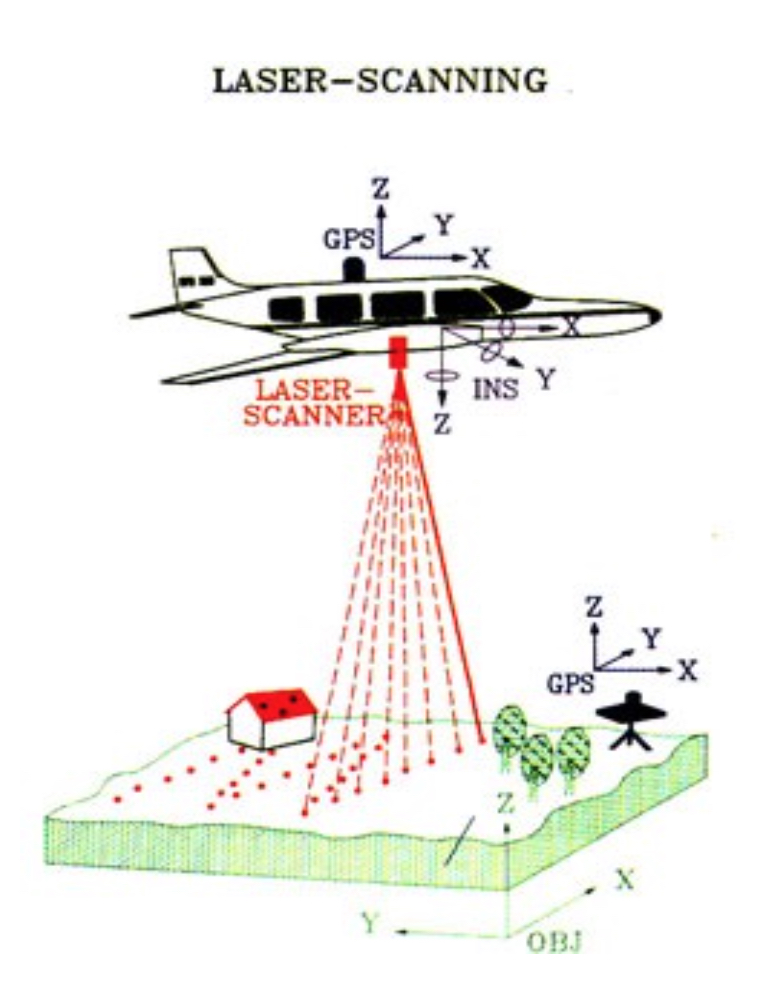
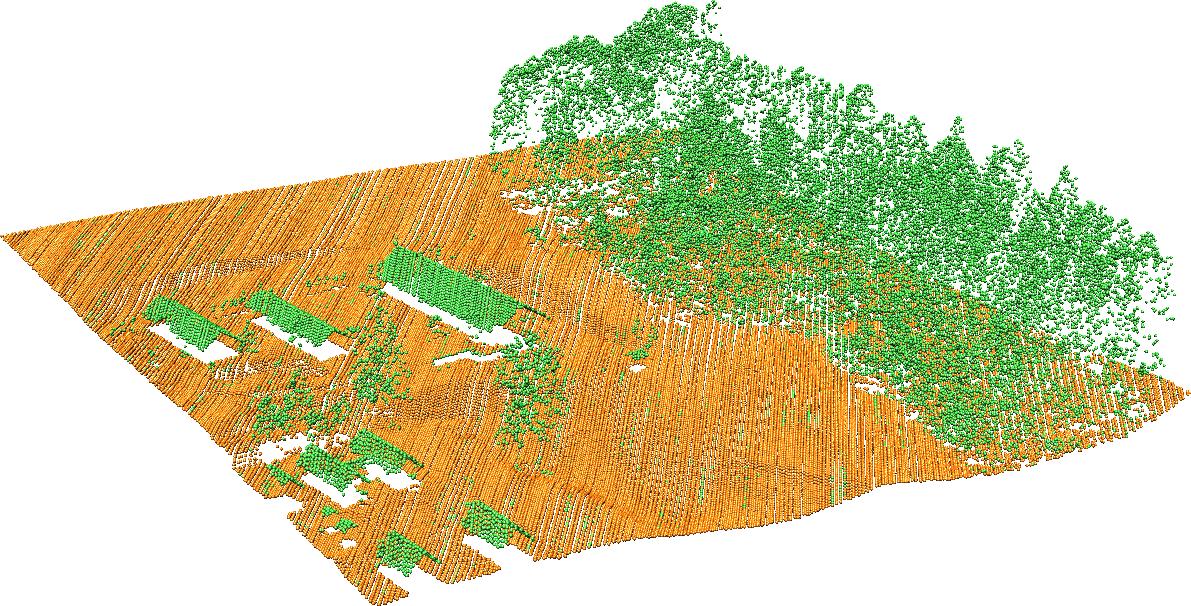
Point cloud data definition
Set of (x, y, z, r, i, c, ...) measured points reflected from Earth surface or objects on or above it, where
- (x, y, z) are georeferenced coordinates,
- r is the return number,
- i is intensity,
- c is class,
Additional data: R:G:B, scan direction, others
Point cloud data formats
- ASCII (x,y,z, ...) format - older data
- binary LAS format (header, record information, x,y,z,i, ... ), industry lidar data exchange format
- compressed LAZ format
- proprietary formats, especially for waveform data
Learn more at ASPRS LAS1.4 Specification
and
USGS Lidar Base Specification
Point cloud data visualization
- Point cloud data are massive: millions of 3D points
- Vector data display in GIS: only for smaller data sets
- Point cloud viewers - adjust rendering to display resolution
- On-line viewer: plas.io
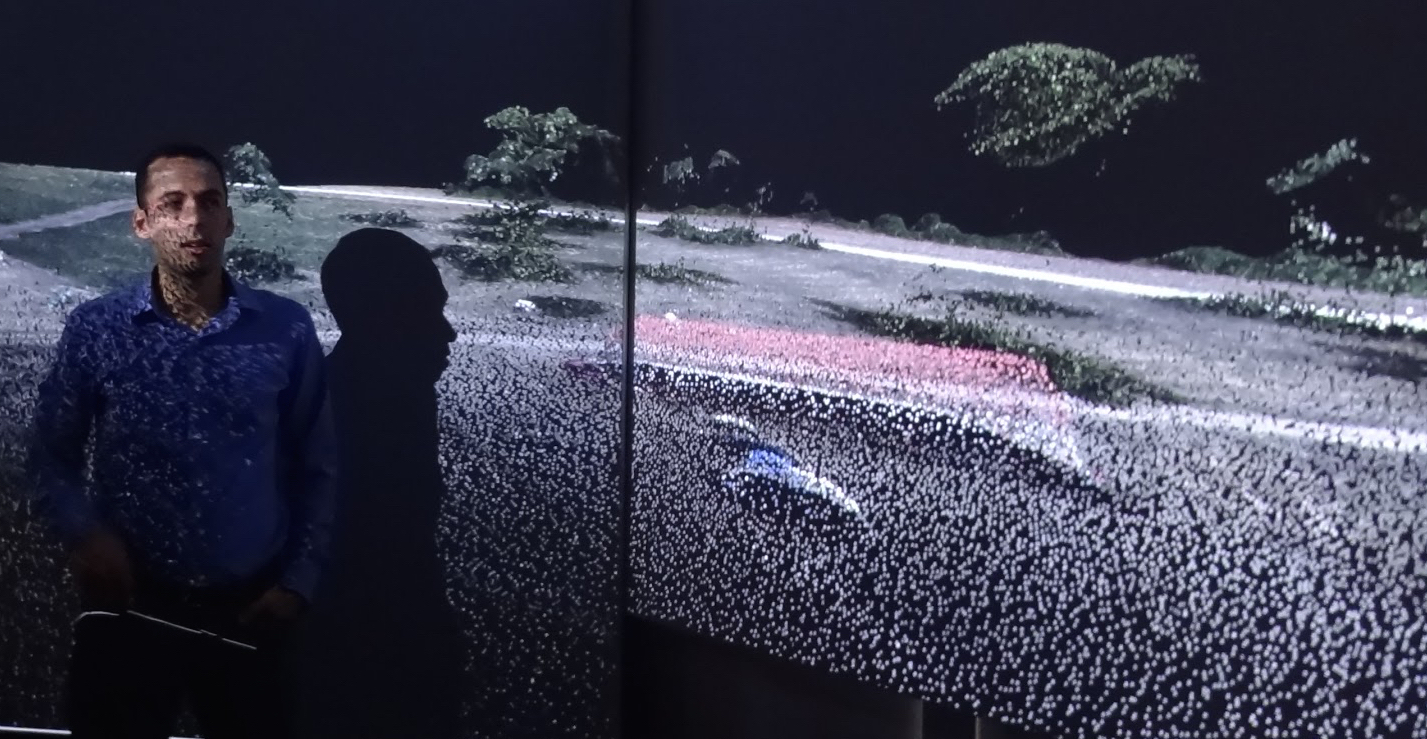

Multiple return point cloud in 3D
Multiple return point cloud 3D view of returns
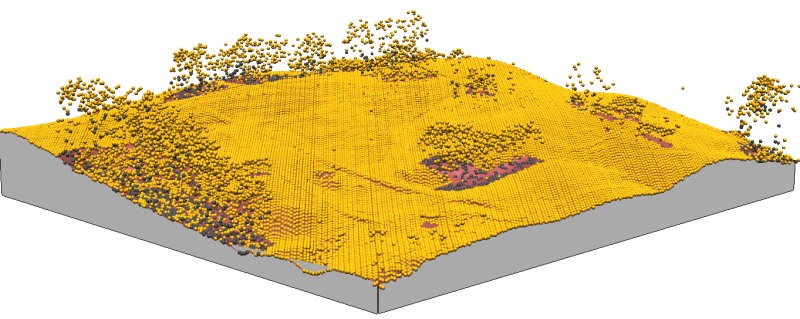
Multiple return point cloud profiles
Multiple return point cloud profile view of returns

Point cloud data properties
Horizontal projection of multiple return point location

Point cloud data processing
- analysis of point distribution
- filtering outliers (birds etc.)
- bare earth point extraction
- classification: canopy, buildings ...
- feature extraction: power lines ...
Methods work for SfM-derived point clouds as well
Analysis of point distribution
Binning: point statistics for each grid cell
- number of points per grid cell - map of point densities,
- range, stddv of z-values - map of within cell vertical variability
- identify data gaps, potential for artifacts
- use to select appropriate supported resolution for DEM
Analysis of point distribution
Increased densities (and potential errors) along swath overlaps or close to terrestrial station position

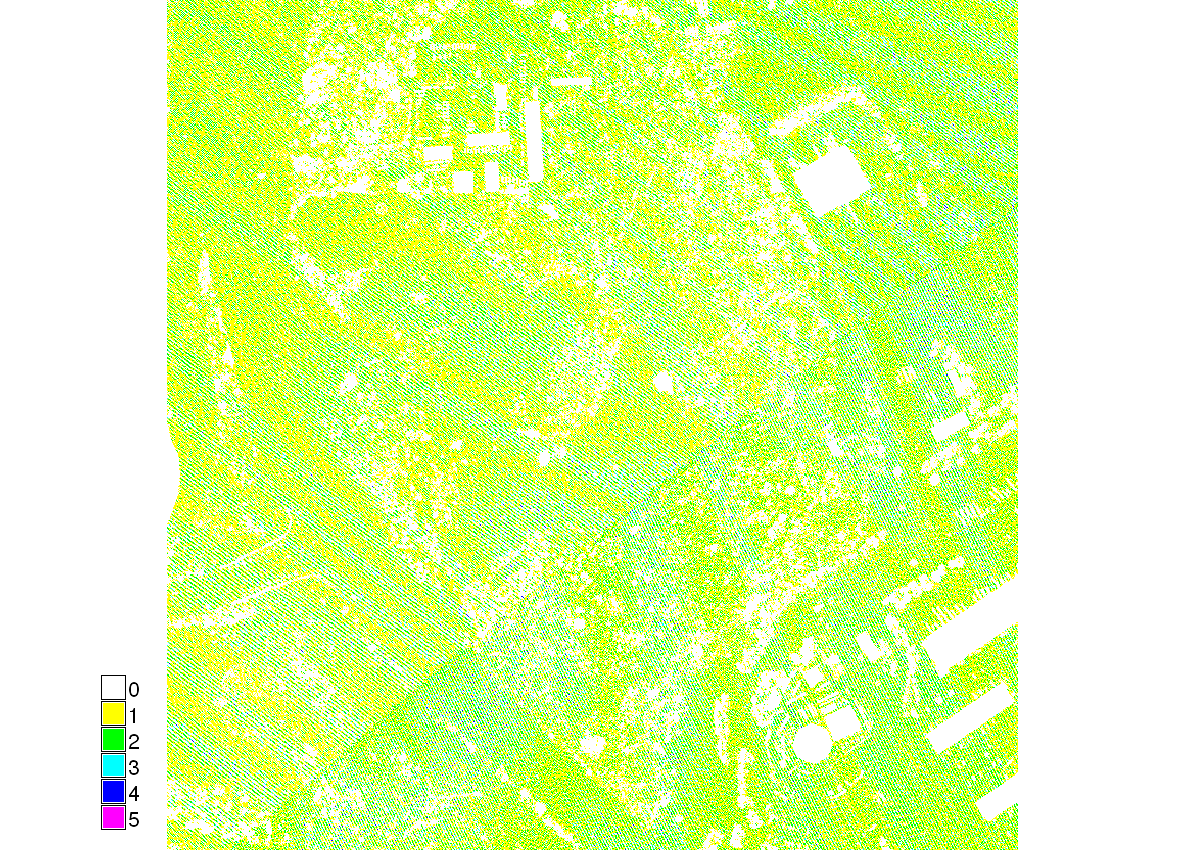
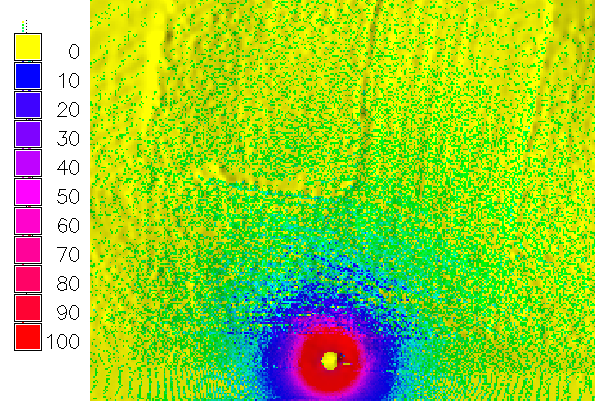
Wake county 2013 lidar all returns and bare earth, TLS at SECREF
Computing DEM: binning
- per cell statistics: mean, min, max, or nearest point z-value
- sufficient for many applications
- no need to import the points, on-fly raster generation
- may be noisy, with no-data areas
Computing DEM: TIN
Meshes standard in 3D engineering and design systems:
- variable resolution based on terrain complexity
- variable level of detail visualization
- 2D triangualtion leads to TIN geometry not optimal for 3D, e.g. triangles on roads, artificial dams in valleys
- harder to combine with other geospatial data
- limited analytics available
- harder to share - limited exchange formats
Computing DEM: interpolation to raster
- supports resolution higher than point density
- results depend on the method used, but most work because of high point densities
- high resolution raster DEMs can be massive - OK for analytics, converts to TIN for 3D visualization
- easy to share
Jockey's Ridge example
Binning at 1m resolution: many NULL cells 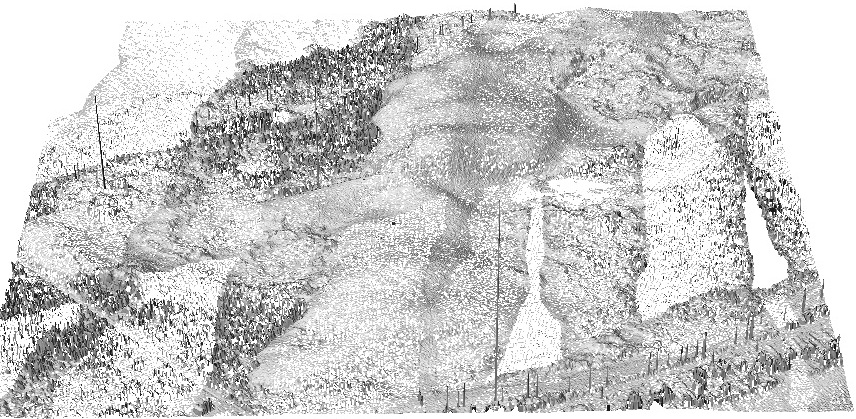
Jockey's Ridge example
Binning at 3m resolution 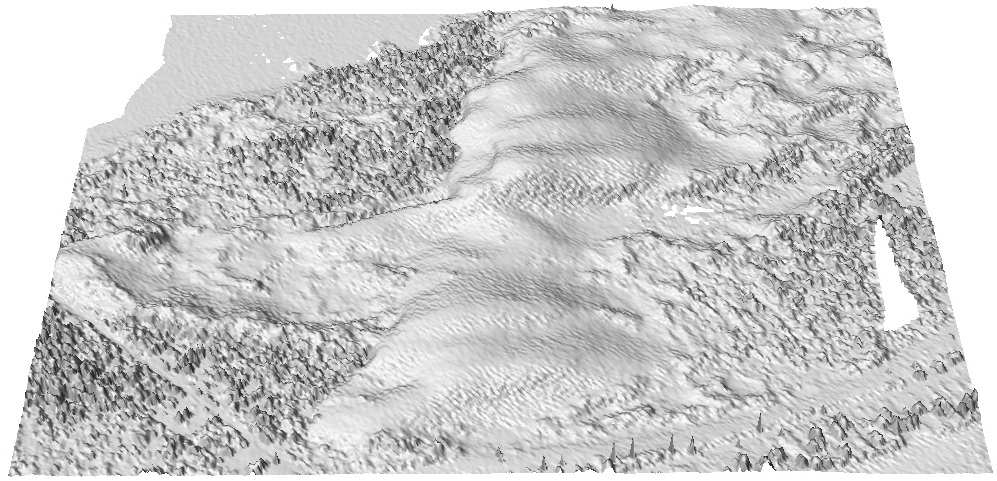
Jockey's Ridge example
Interpolation at 1m resolution 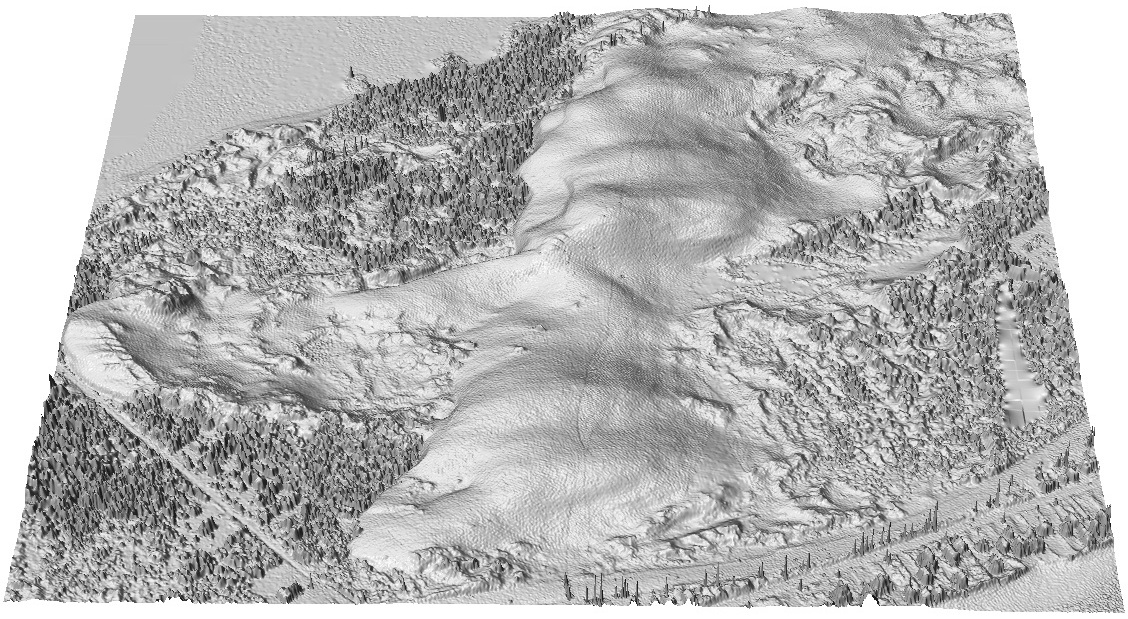
You can try TIN for comparison - provide data
Topographic analysis from lidar DEMs
Deriving slope, aspect, curvatures challenges:
- DEMs are often noisy and parameters can reflect noise rather than actual topography,
- high resolution leads to representation of landforms by 10s or 100s of points or grid cells
- standard topographic analysis using 3x3 neighborhood leads to noisy patterns of topographic parameters or bias towards point distribution pattern
Topographic analysis from lidar DEMs
Slope and profile curvature using the standard 3x3 window polynomial approximation
EXAMPLE IMAGE
Topographic analysis using splines
Simultaneous computation of parameters with interpolation- parameters derived from original points rather than raster
- explicit equations for partial derivatives: RST
- tens or hundreds of points can be used
- tuning the level of detail by tension and smoothing parameters
Topographic analysis using splines
Tuning the level of detail with tension parameter 
Topographic analysis using splines
Tuning the level of detail with tension parameter 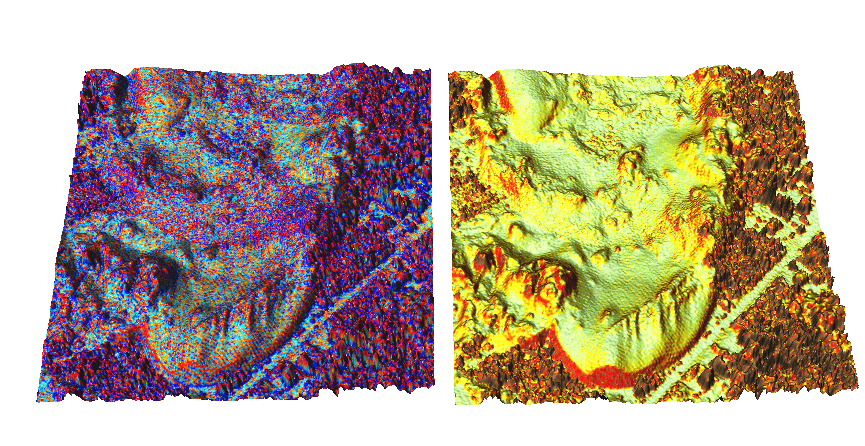
Landform analysis from lidar DEMs
- differential geometry with user defined window size
- line of sight based geomorphons

REFRENCES, IMAGES
Stream extraction from lidar DEMs
Lidar DEMs have many true depressions and large areas dammed by roads,
depression filling substantially reduces the accuracy of DEM
Least cost path flow tracing is more robust
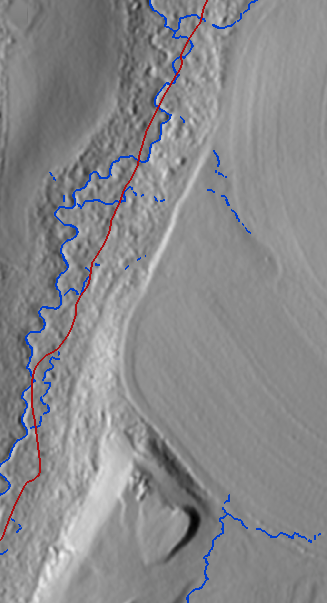
Lidar data time series
Issues: vertical and horizontal shifts, differing point densities and patterns, varying spatial extent
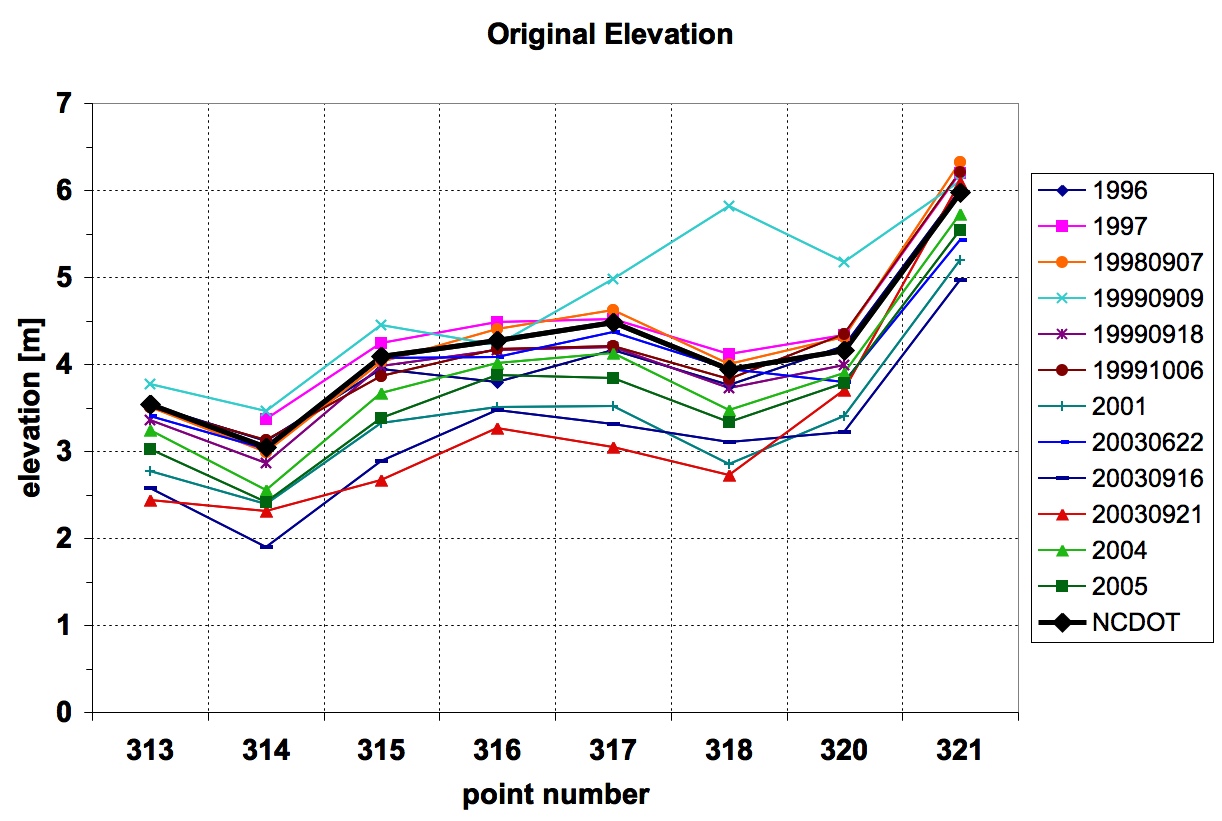

Lidar time series: JR animation
Migration and transformation of Jockey's Ridge 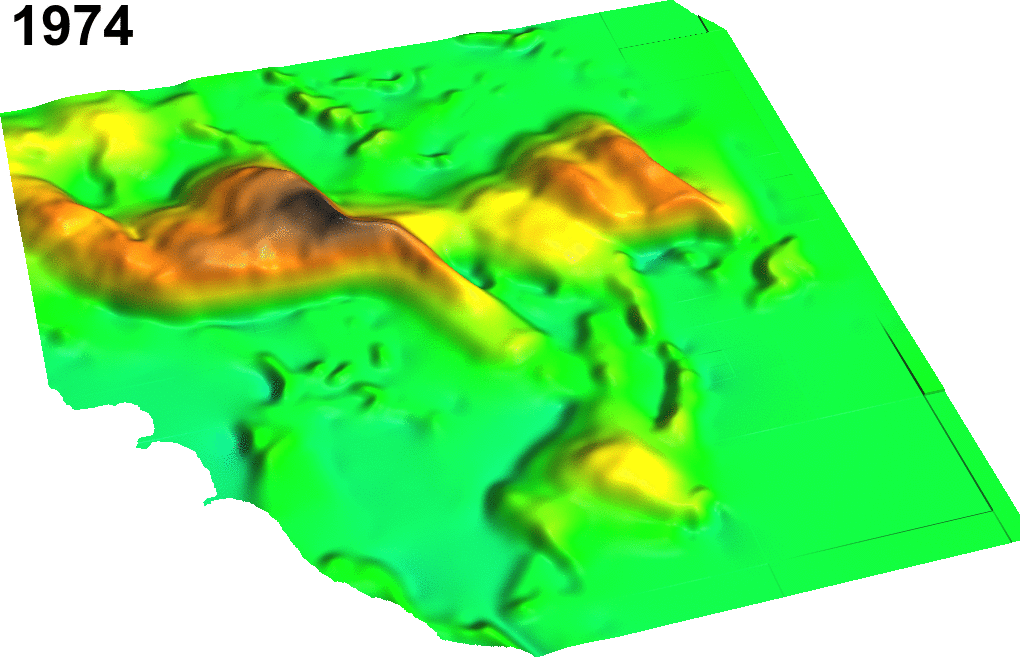
Lidar time series: space-time cube
Evolution of 16m and 20m contour on Jockey's Ridge 

Lidar time series: Umstead park
Stream bank erosion measured by TLS
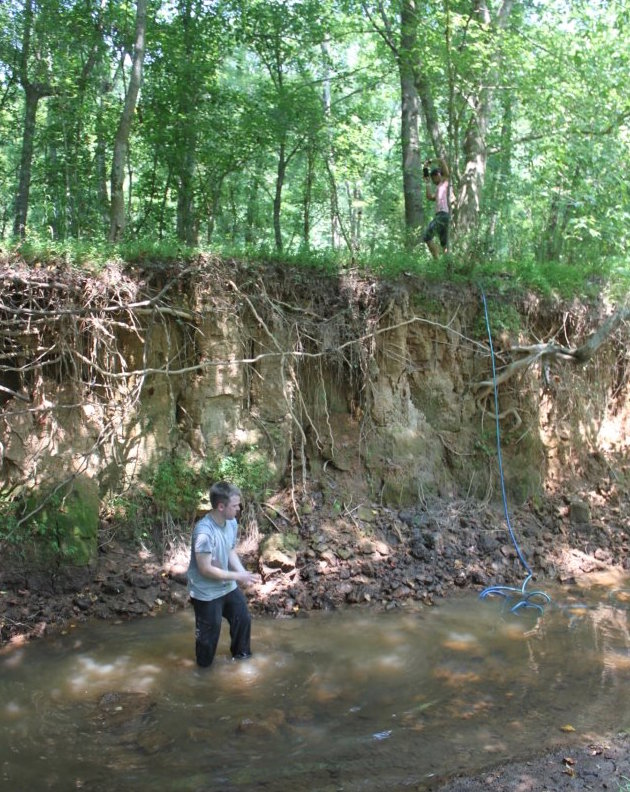

Lidar time series: STC Umstead

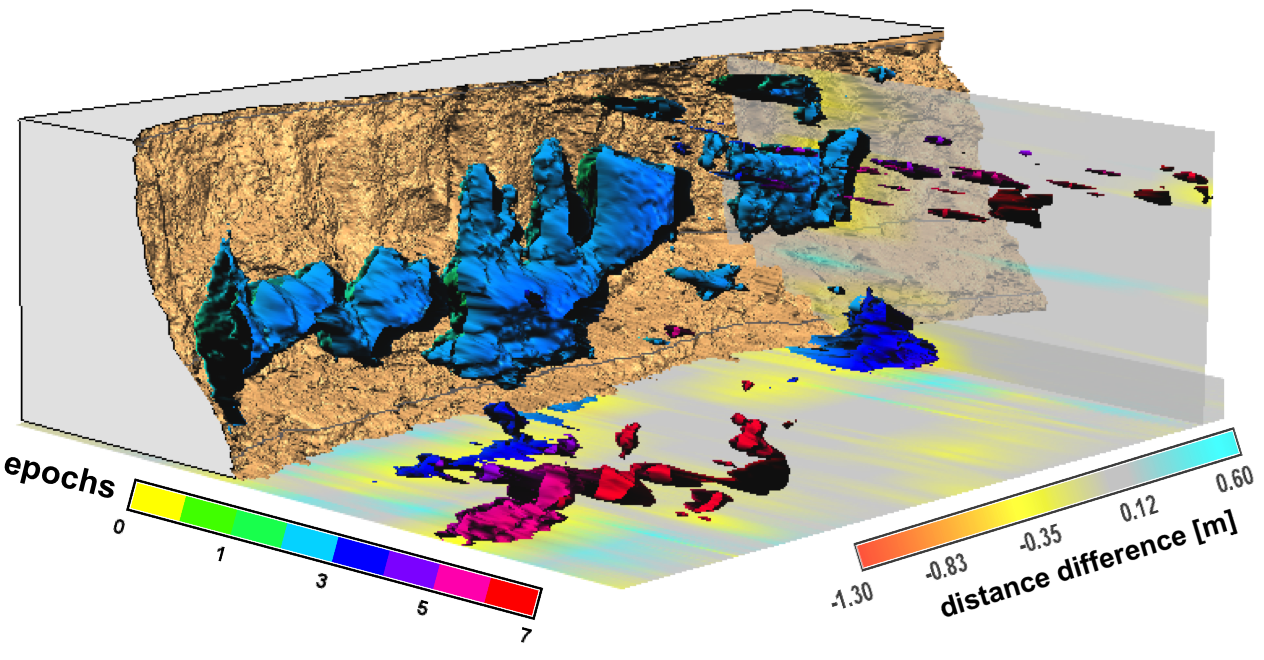
Mamoth Cave Park: data
- classified point cloud in las format
- raw full waveform in lwv format
- imagery
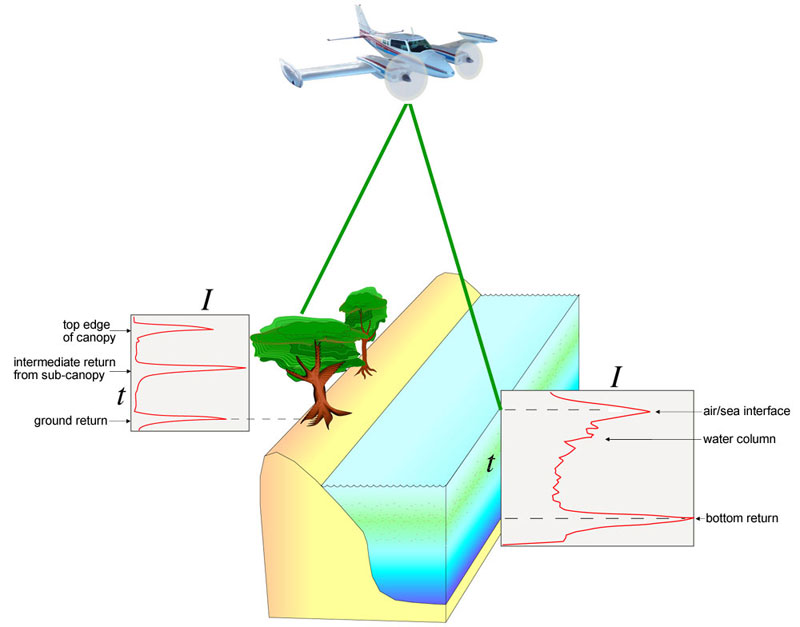
Mamoth Cave Park: canopy
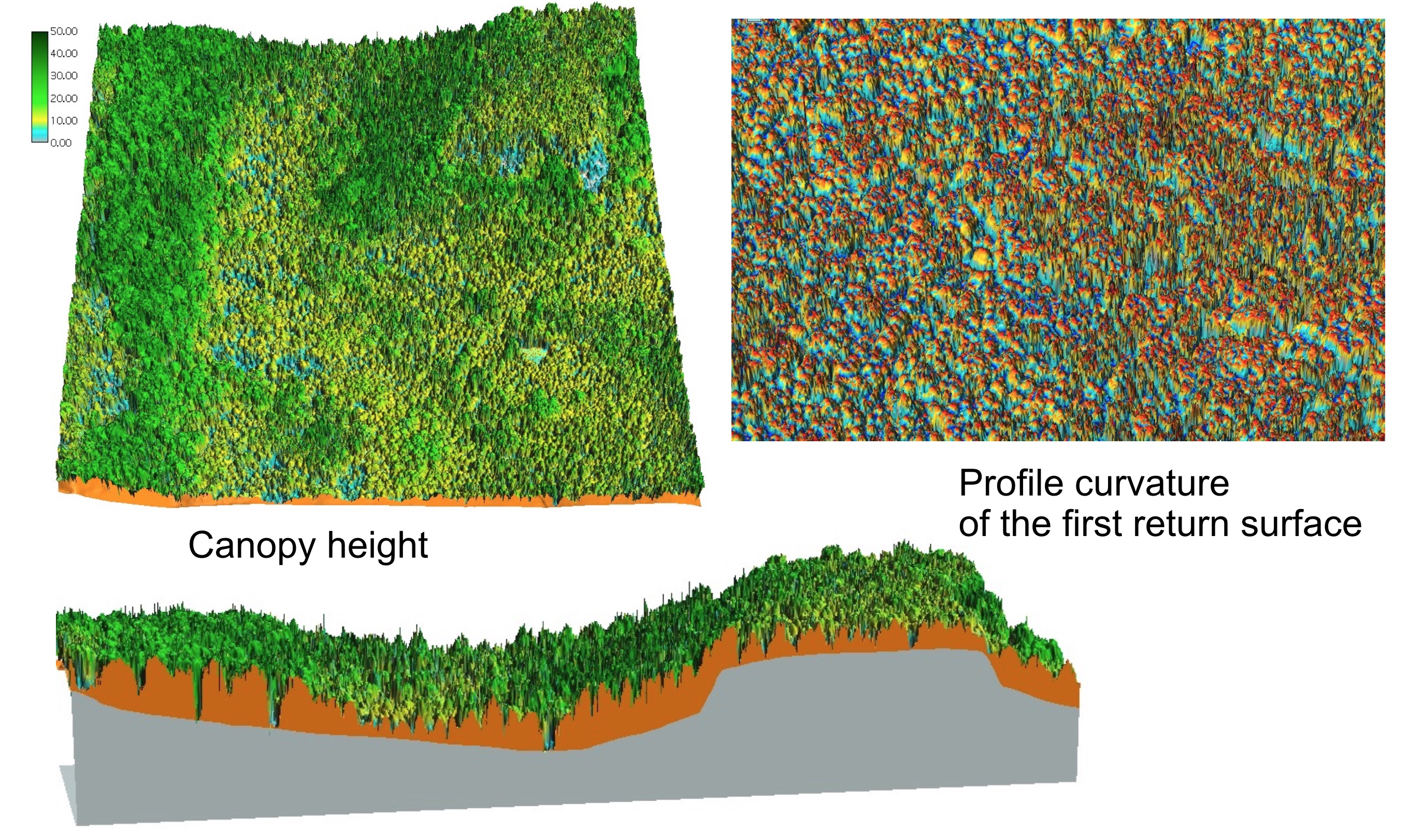
Mamoth Cave Park: bare earth
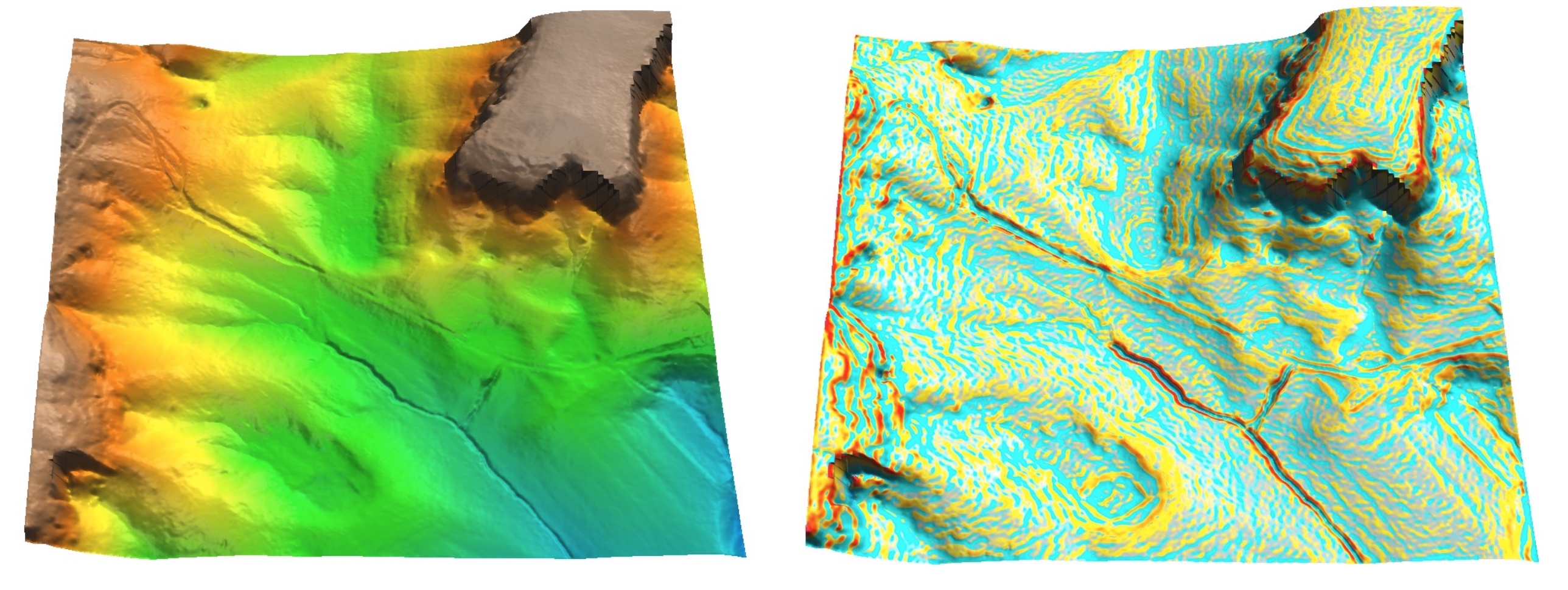
Voxel models
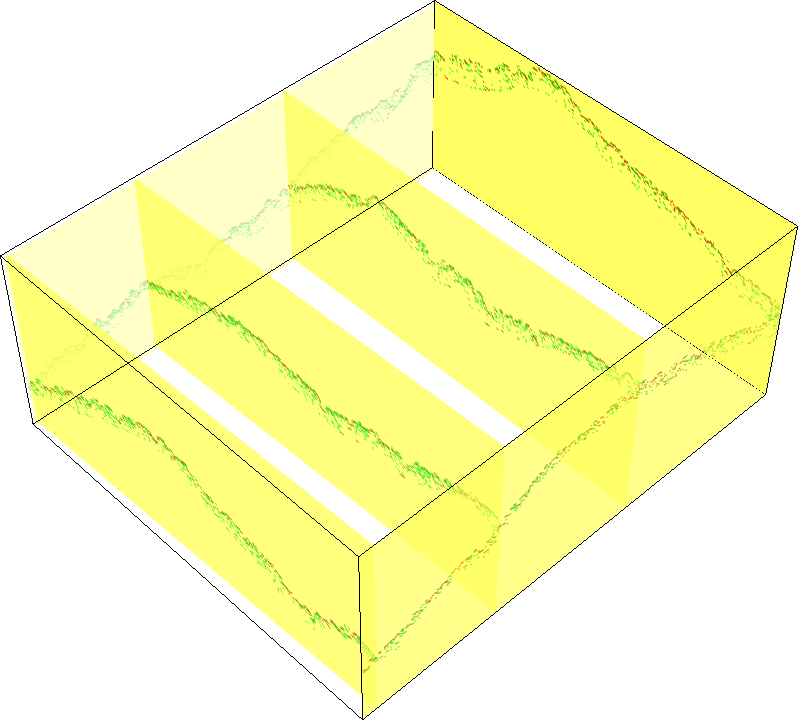

Petras, V; Petrasova, A; Jeziorska, J; Mitasova, H, 2016, Processing UAV and lidar point clouds in GRASS GIS, ISPRS Archives.
Wake county 2013 lidar
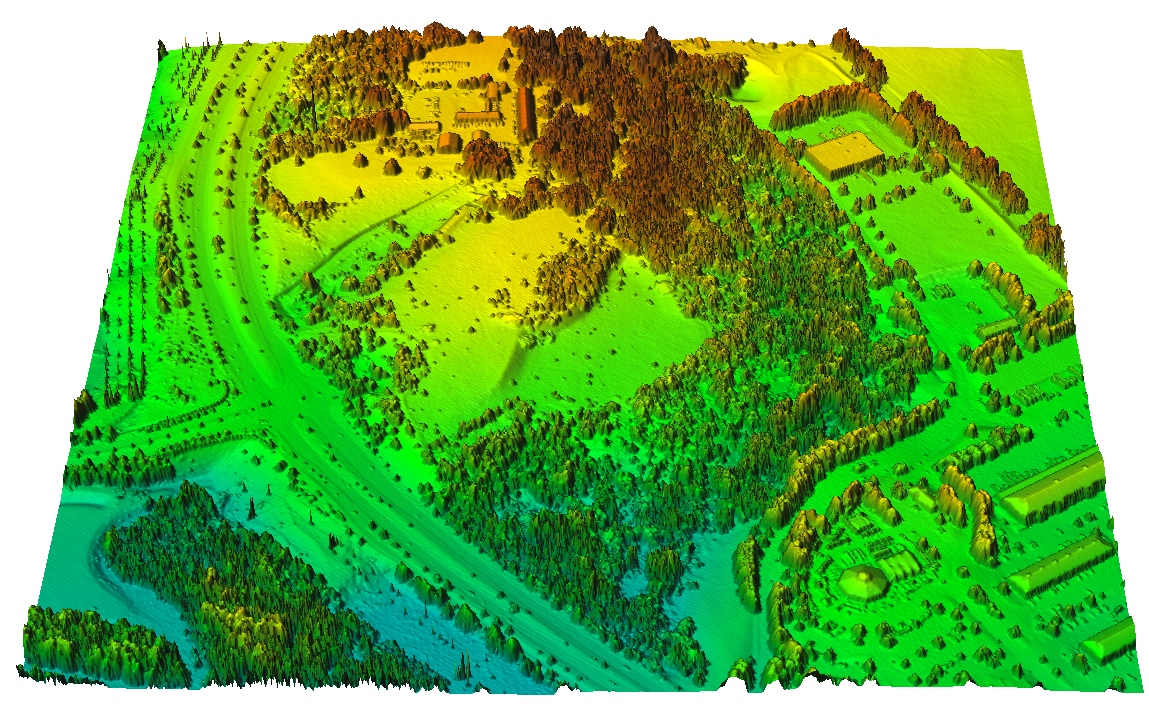
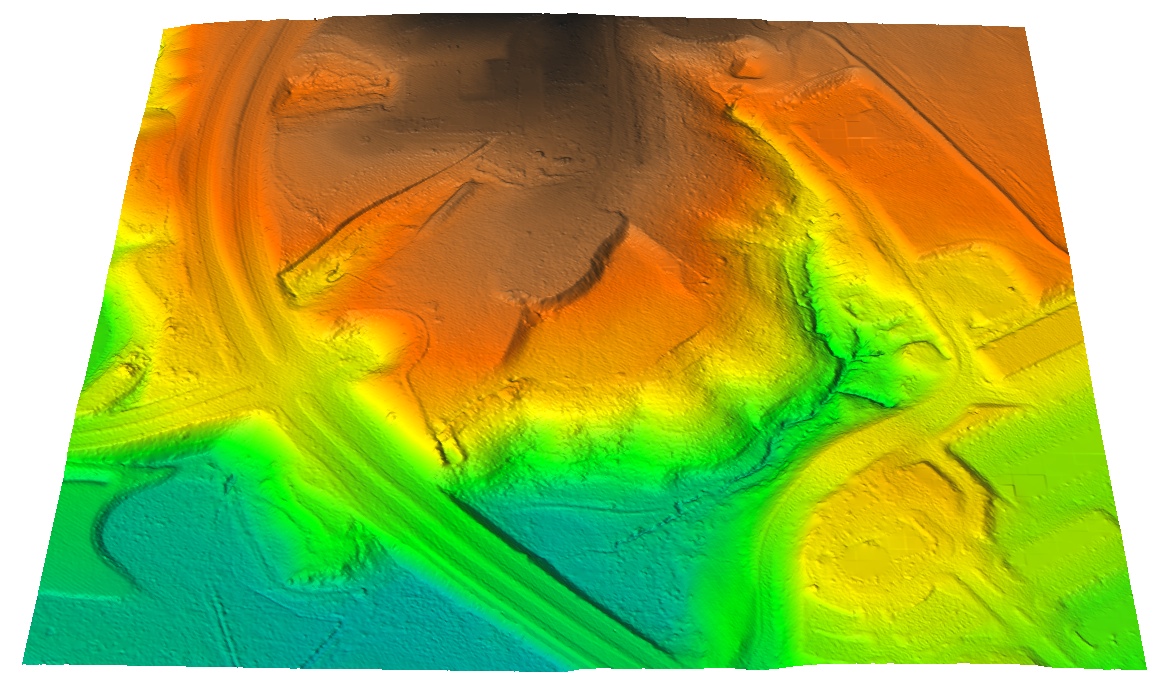
Wake county 2013 lidar
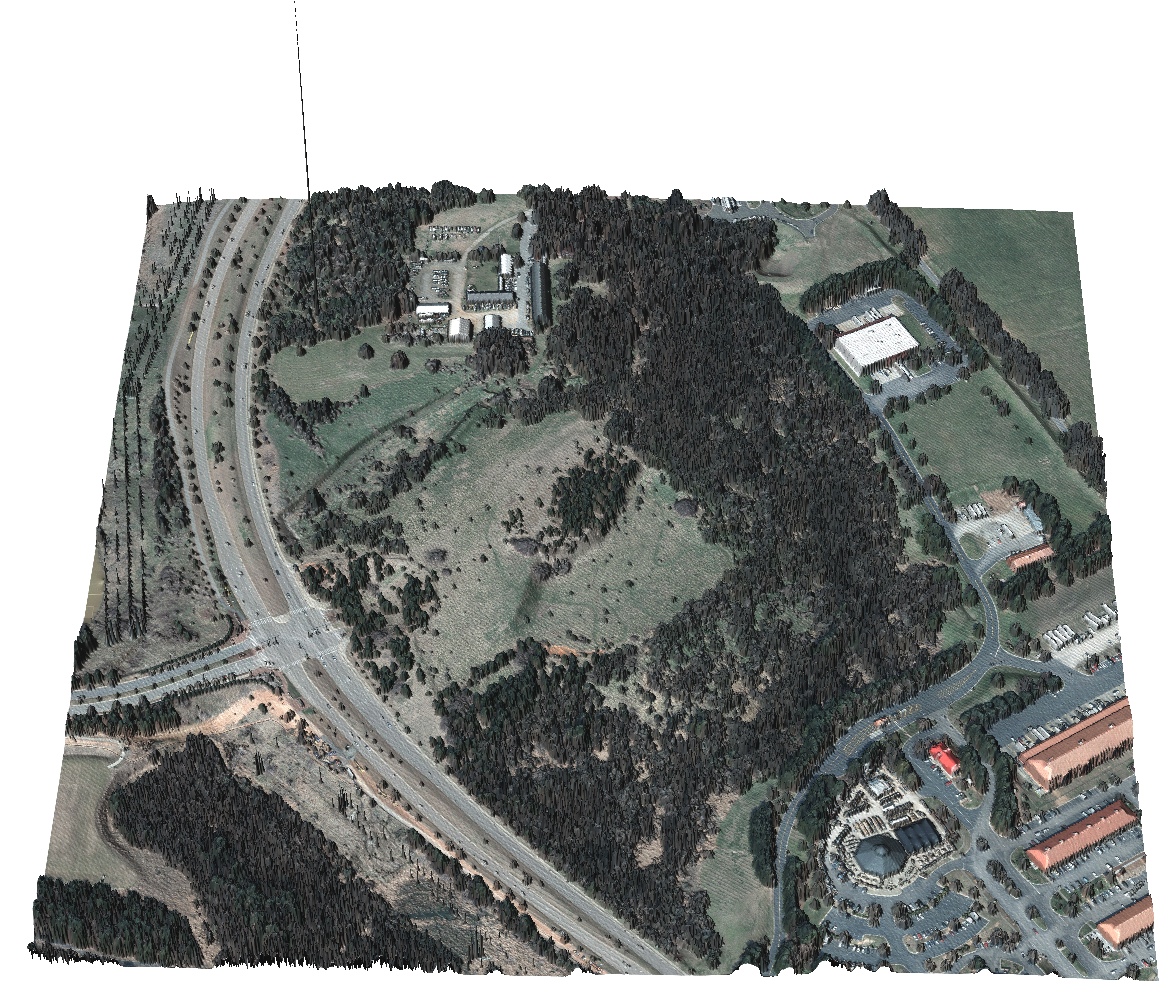
Lidar data sources
Public data sources (http in Summary slide):
- CLICK: raw point clouds usually in LAS format
- NOAA Digital Coast: costal point clouds with on-fly binning
- NC Floodplain Mapping: bare Earth: points, 20ft DEM and 50ft DEM with carved channels
- NC data portal
- OpenTopography: NCALM data
more about lidar in GRASS at http://grasswiki.osgeo.org/wiki/LIDAR